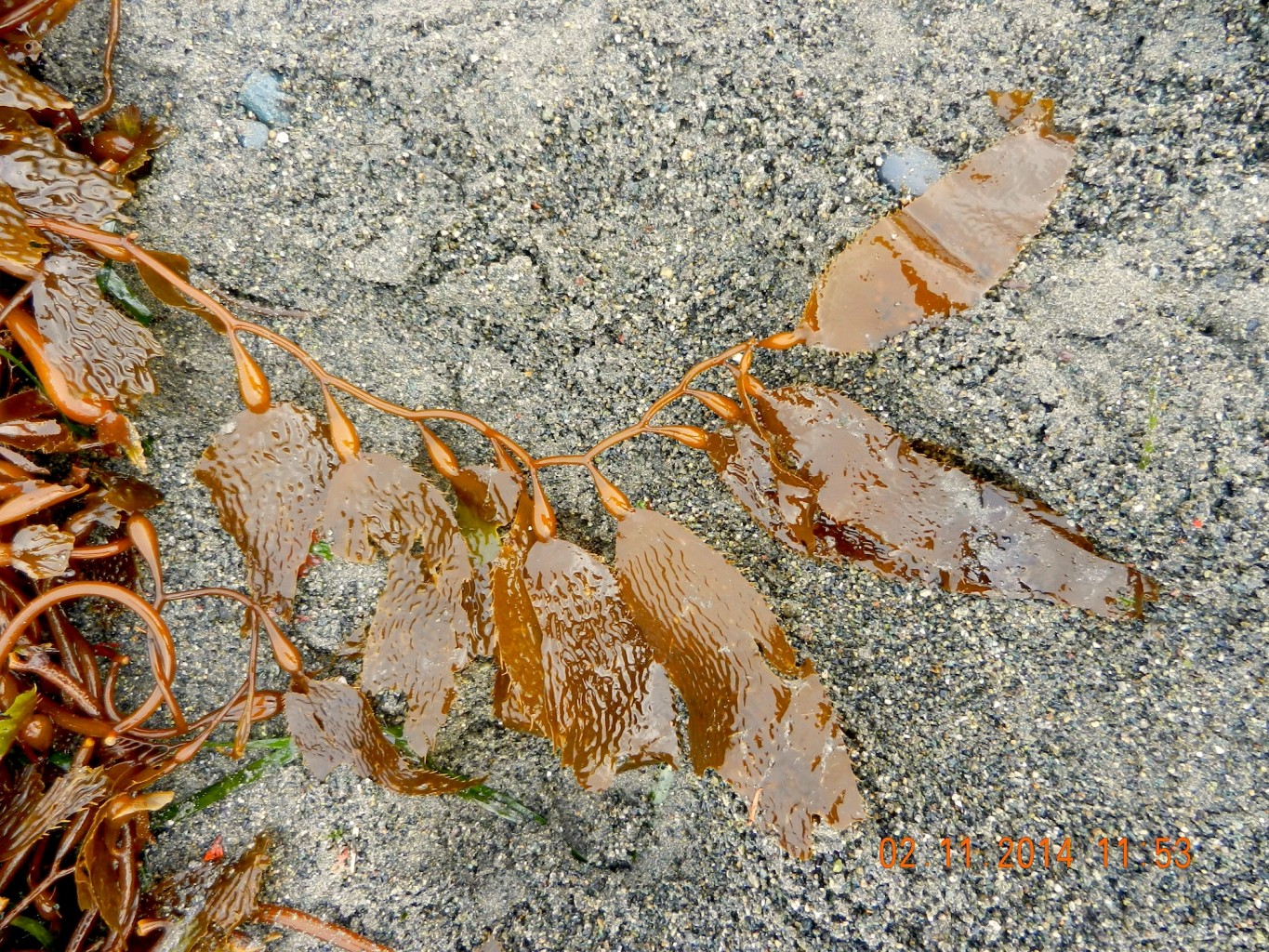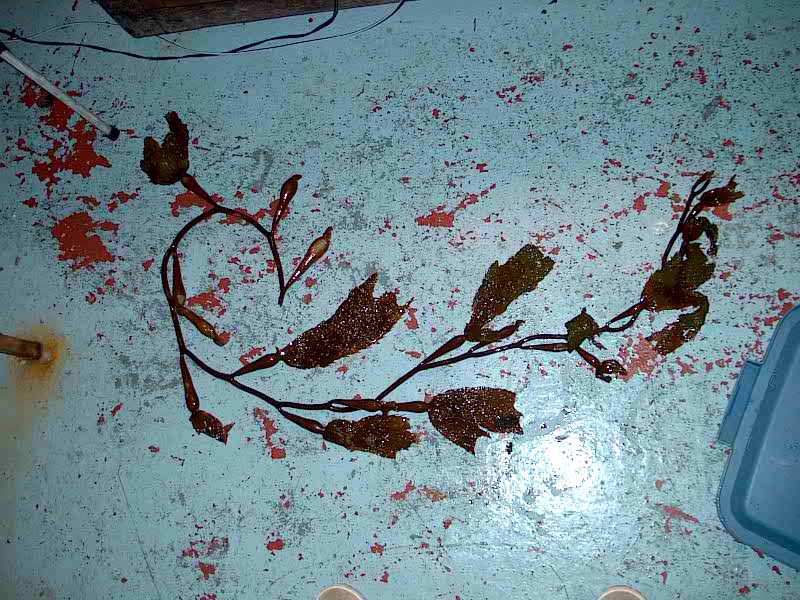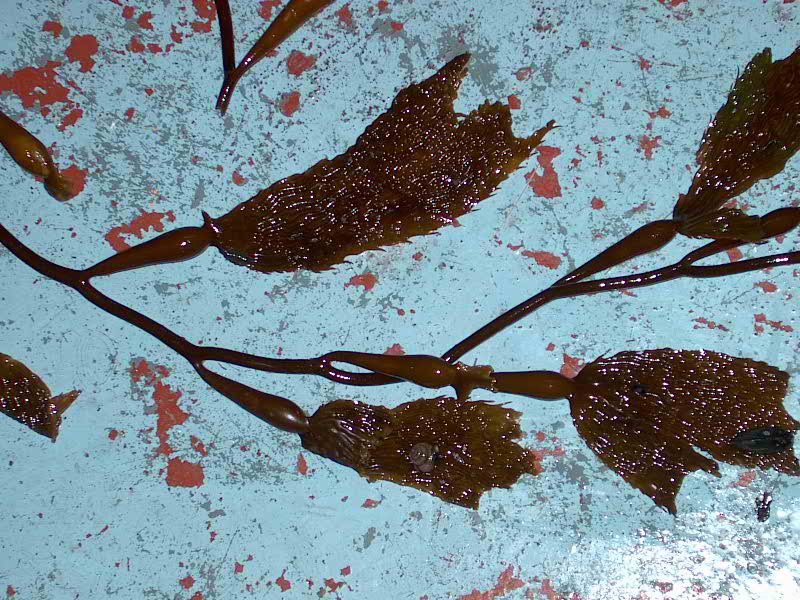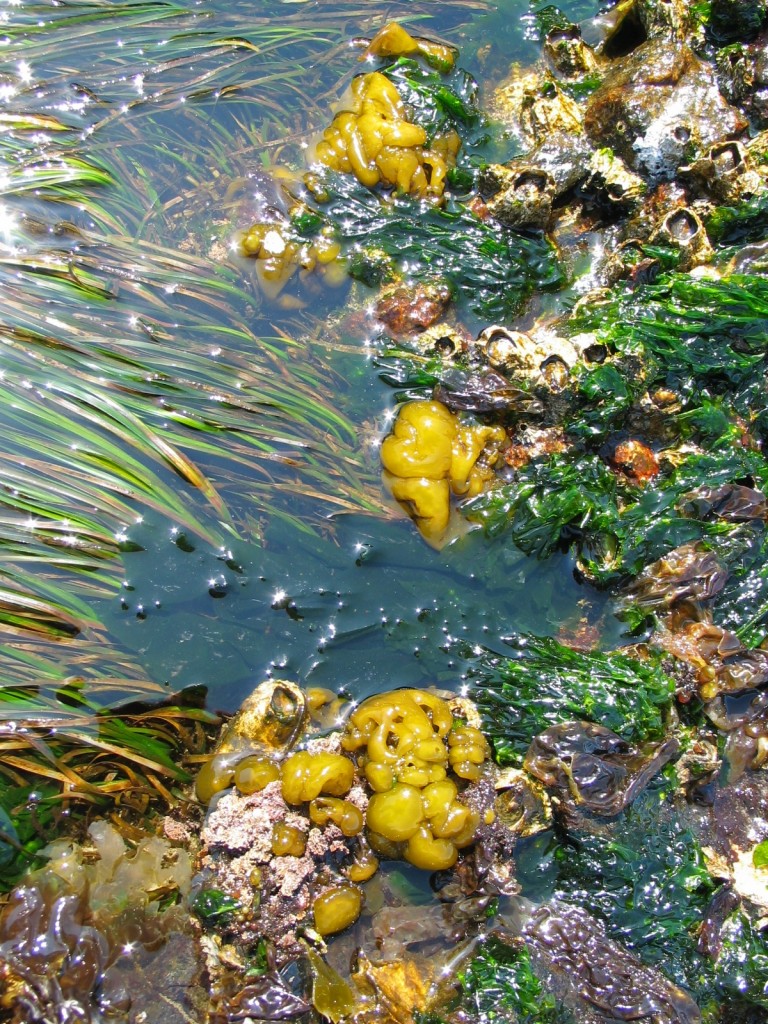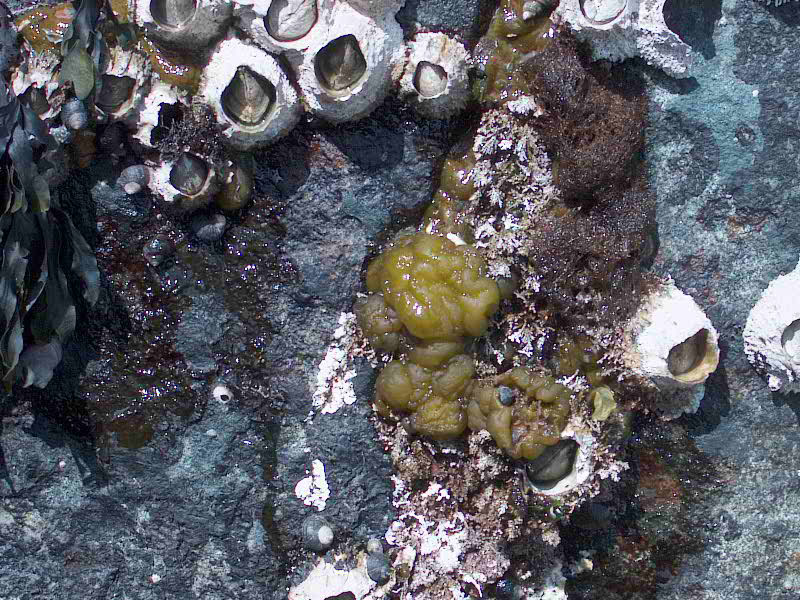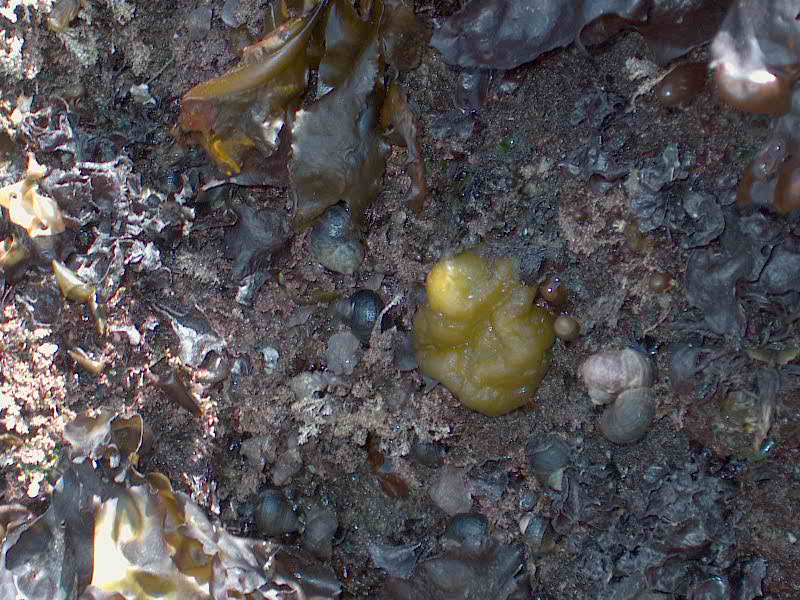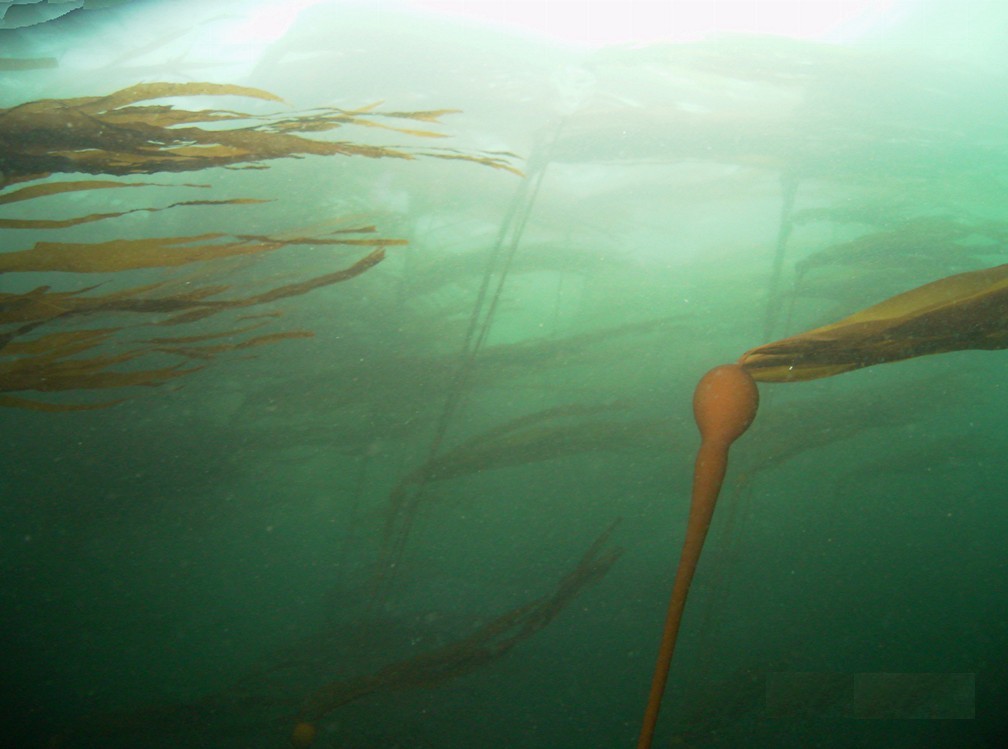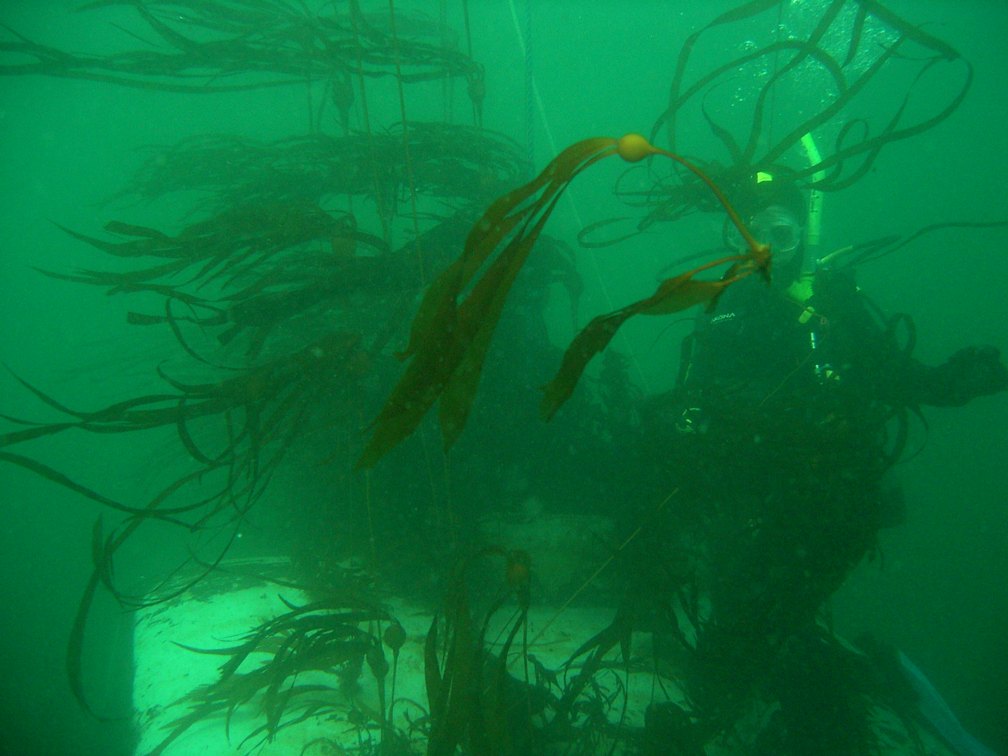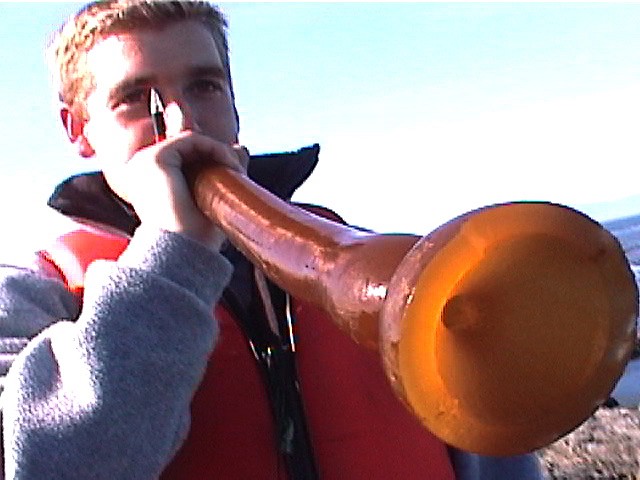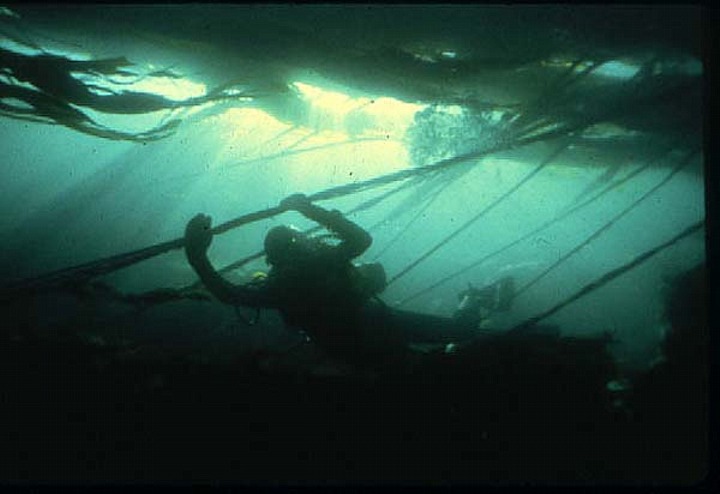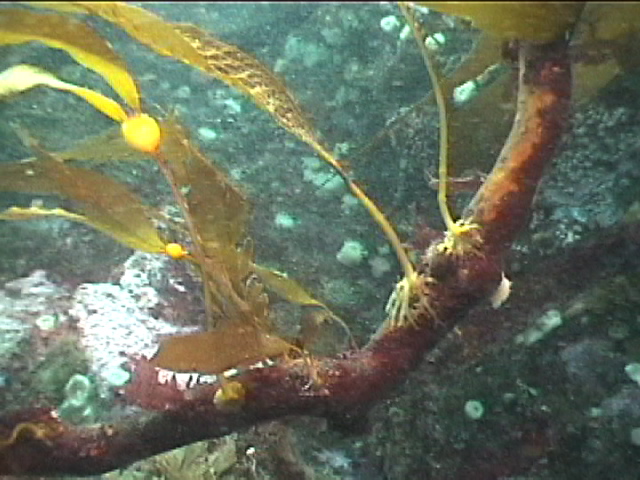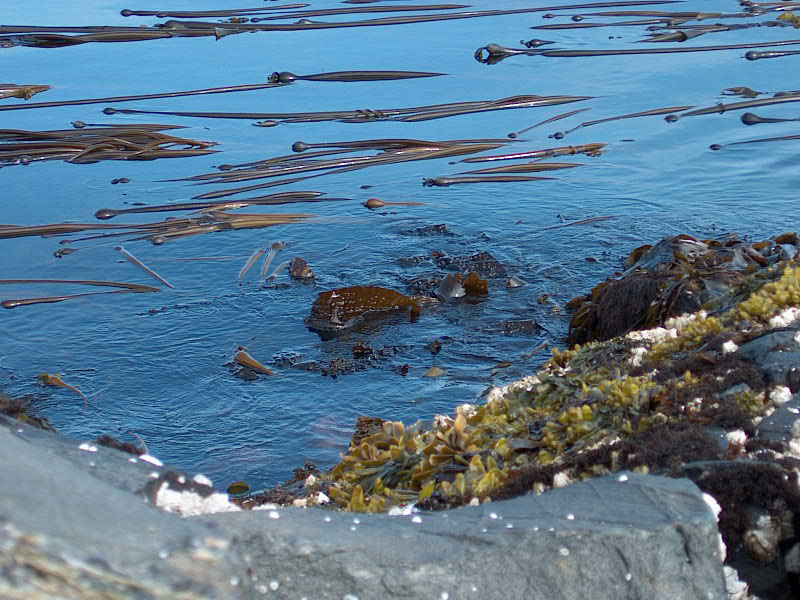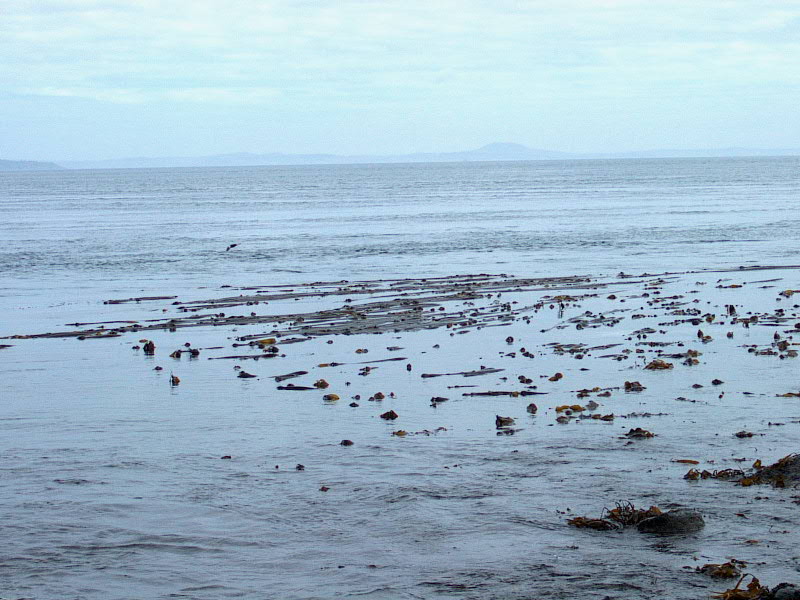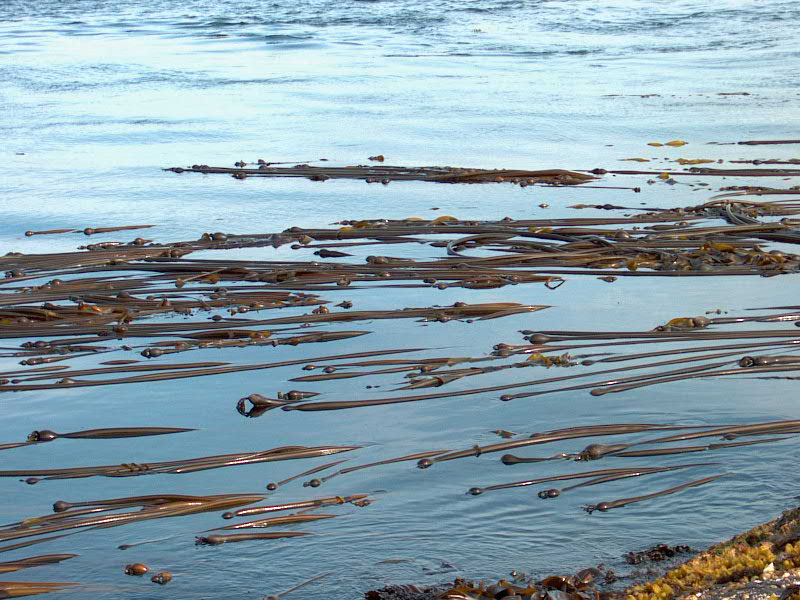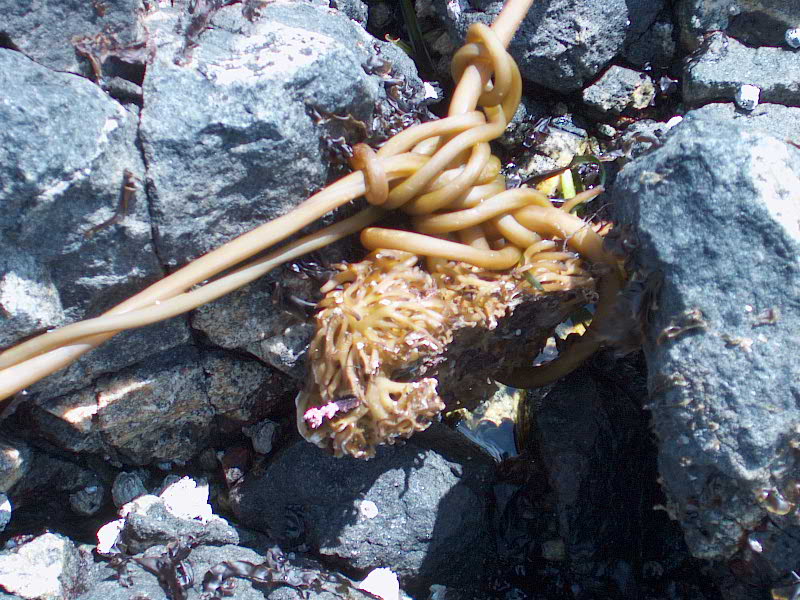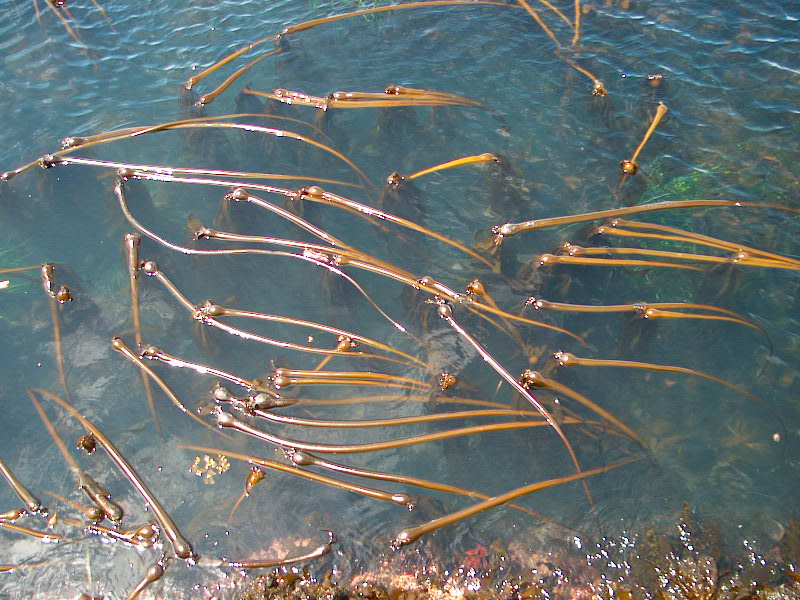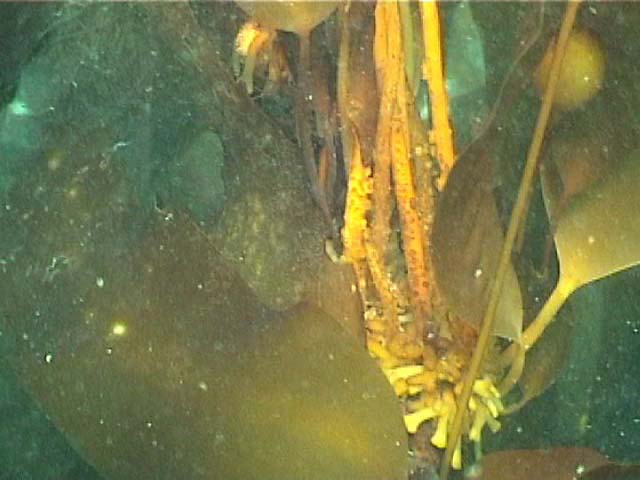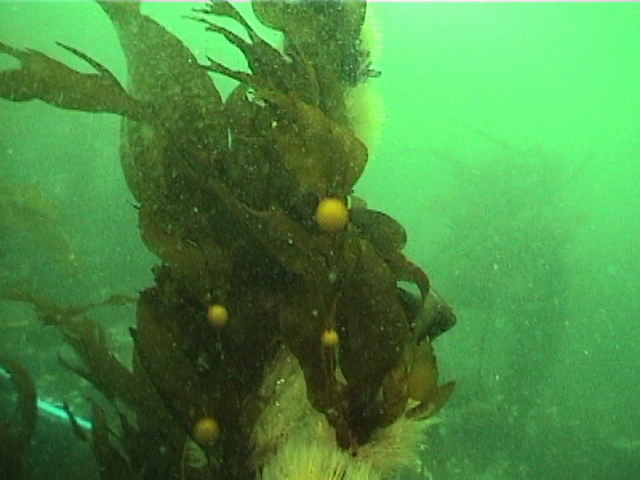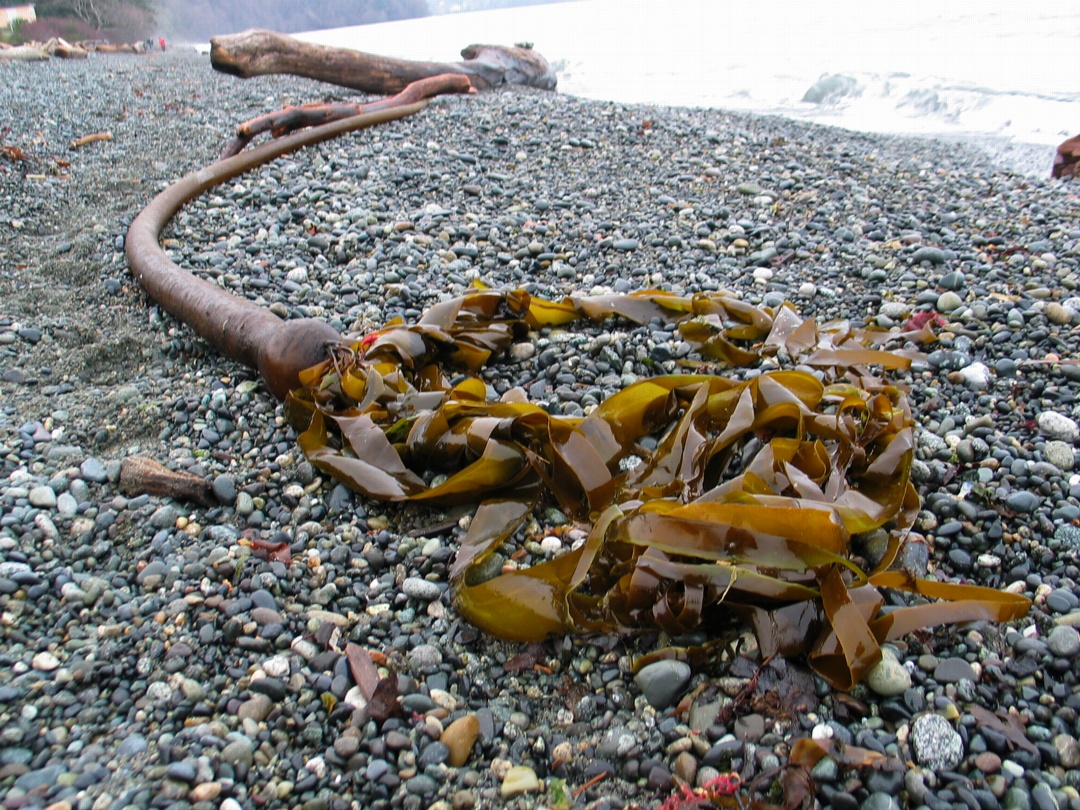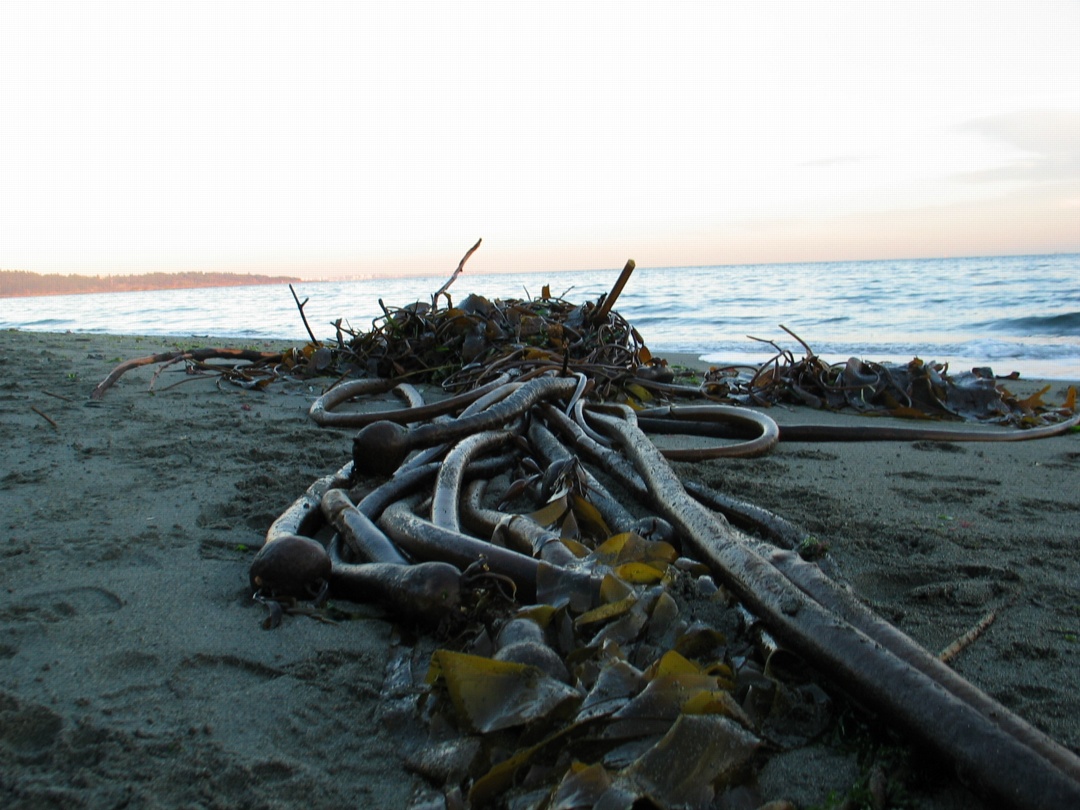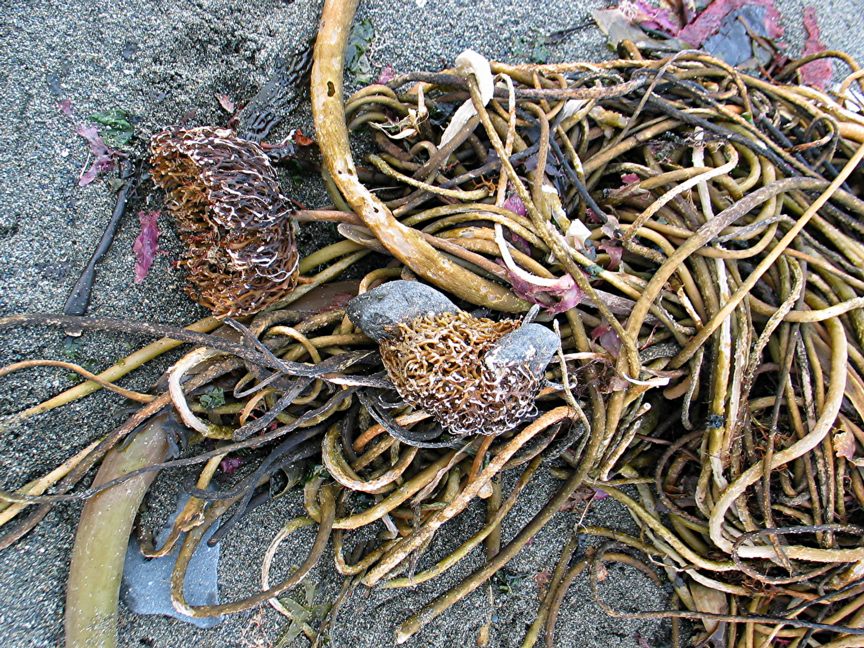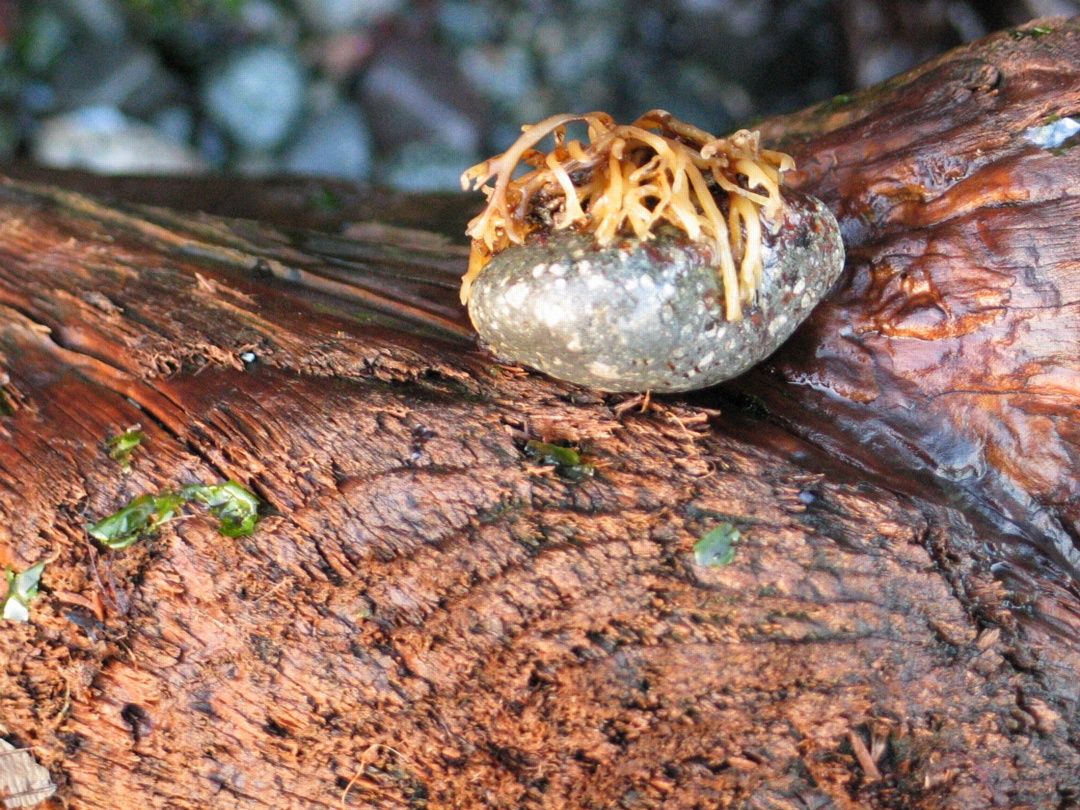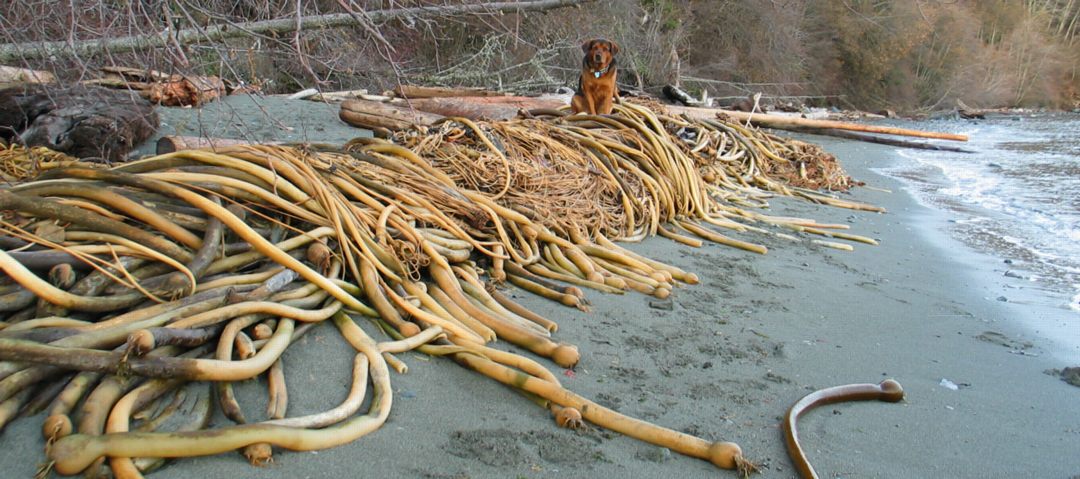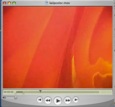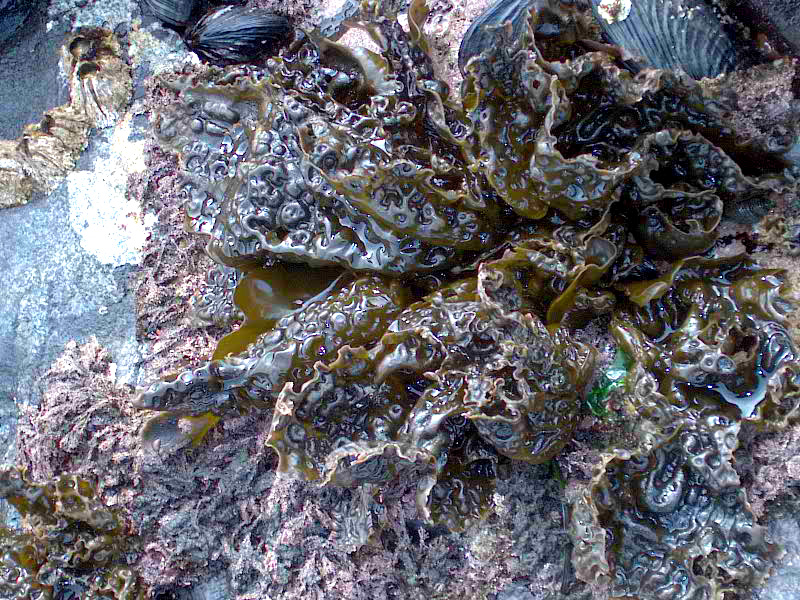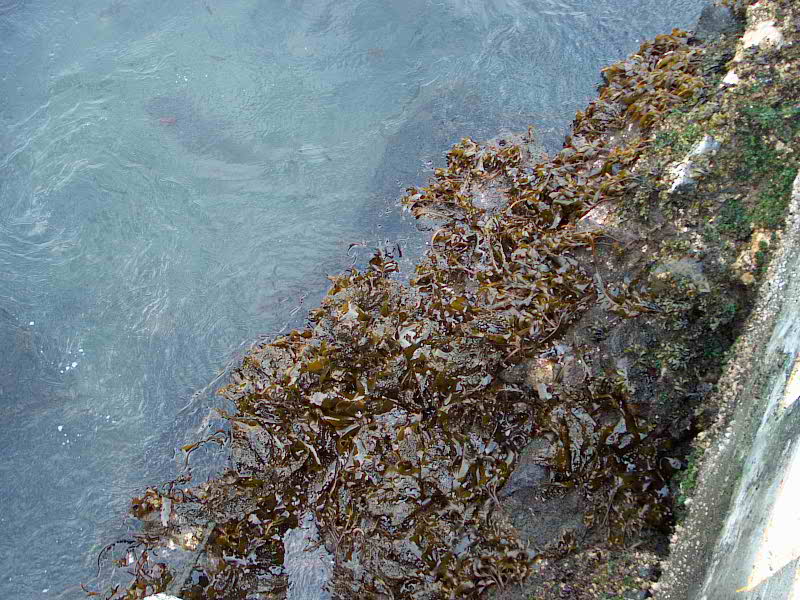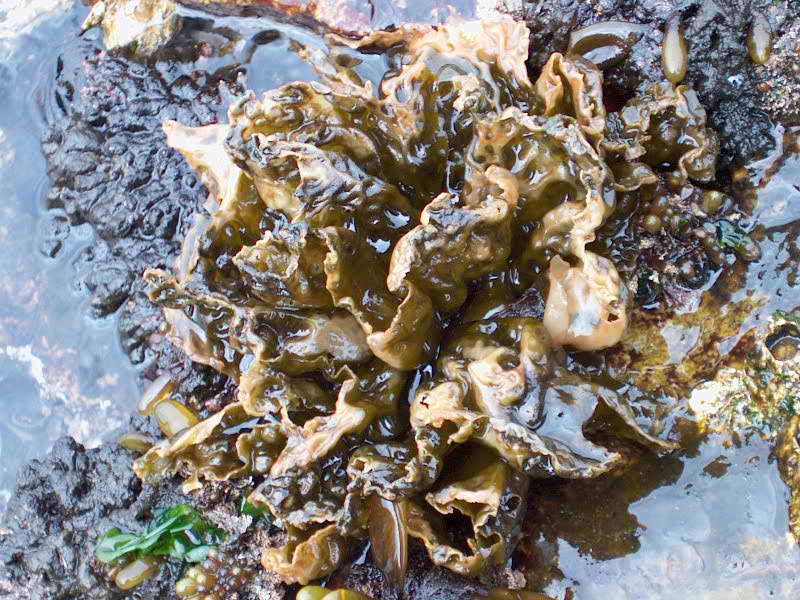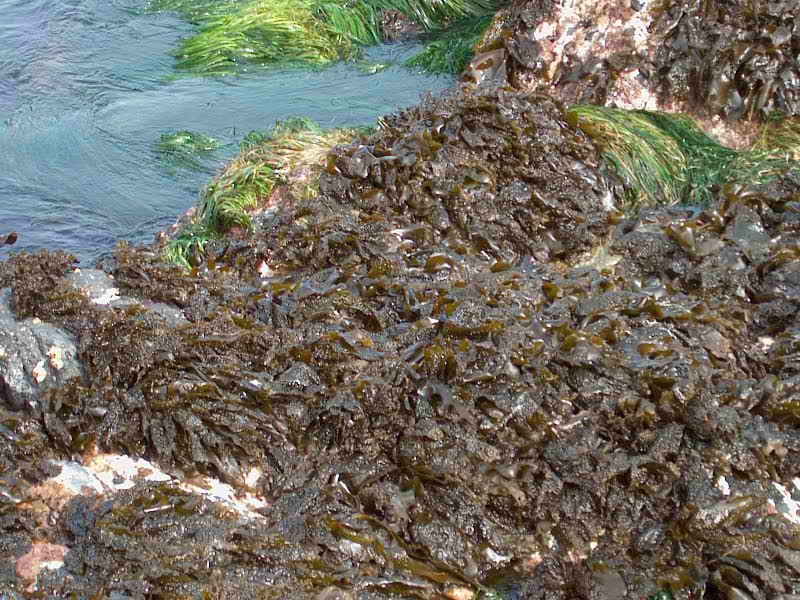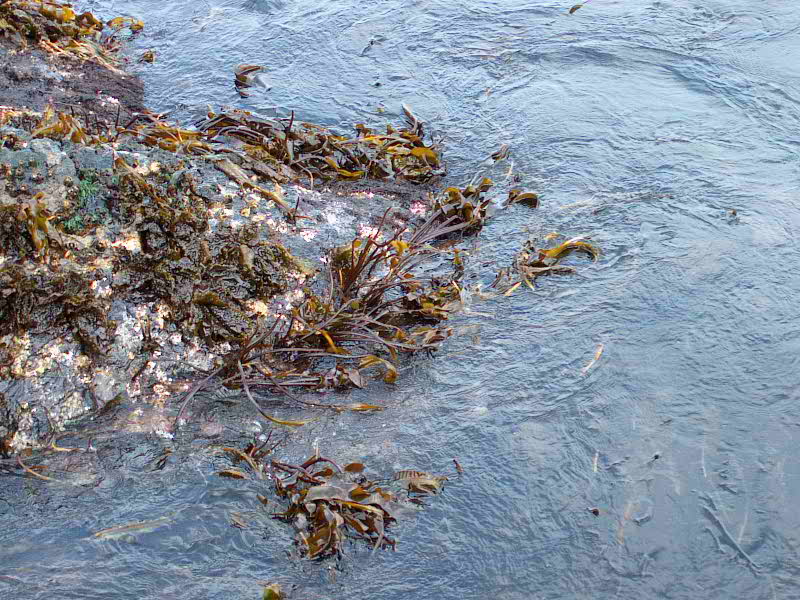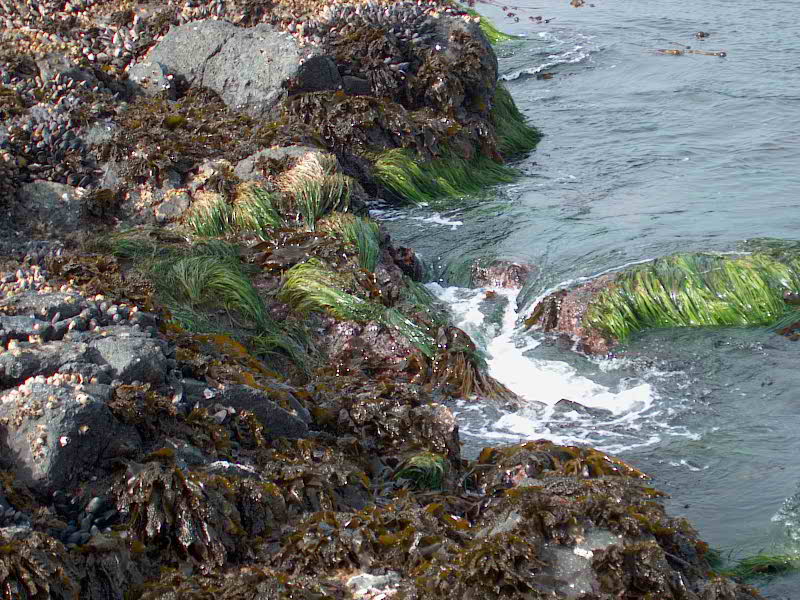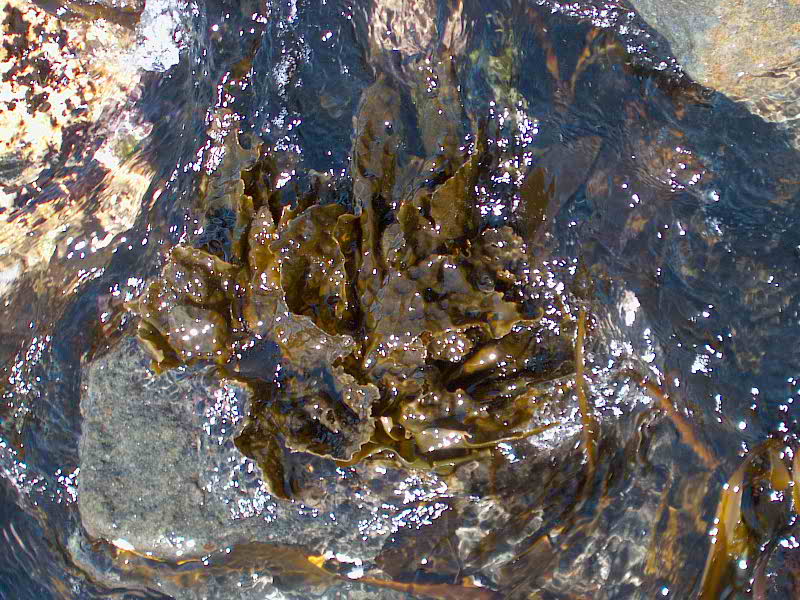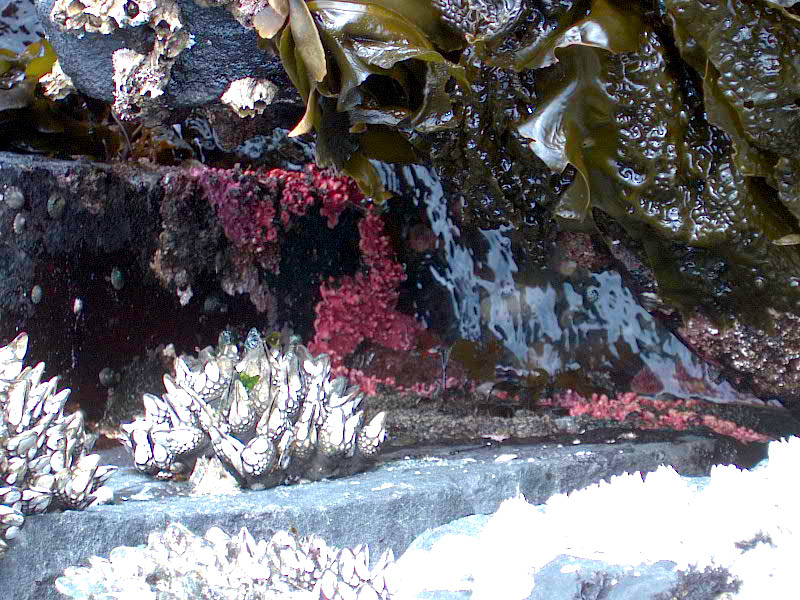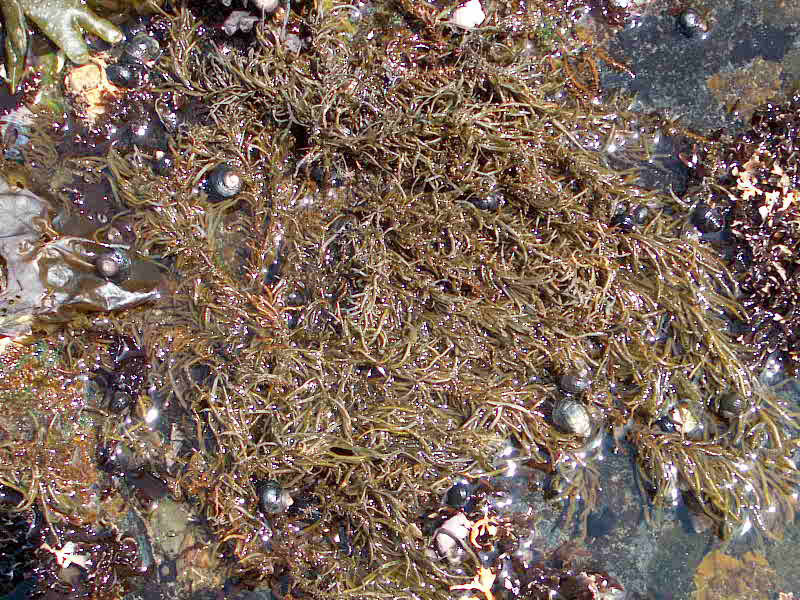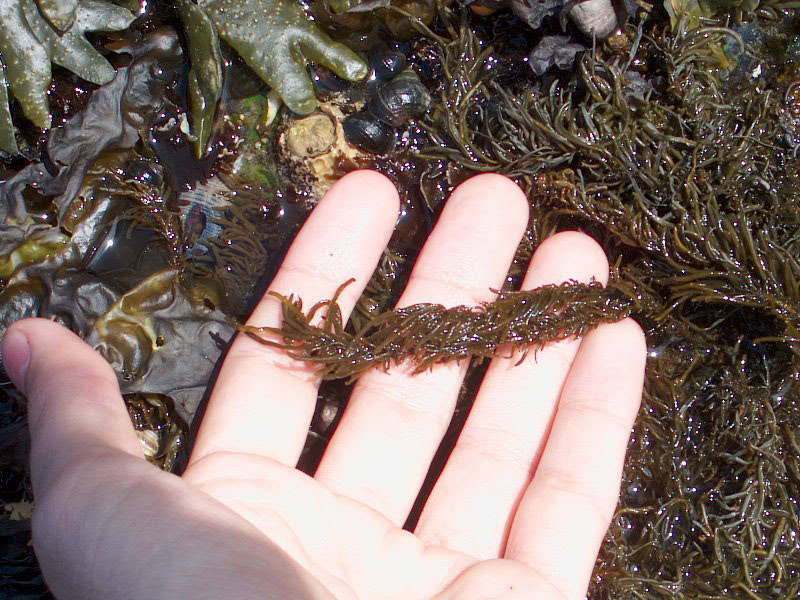- Habit of section of plant that washed ashore to Race Rocks in the summer of 2002 (this species is not native to Race Rocks)
- M. integrifolia blade-like branches showing dentate edges, corrugated surfaces and proximal floats
Macrocystis (Greek=Large bladder), the largest of all seaweeds, is represented by two species along the outer shores of British Columbia.
Macrocystis integrifolia is the most common species, distributed from Alaska to Monterrey, where it normally inhabits the lower intertidal and upper subtidal regions in areas subjected to moderate waves.
Description: This species of kelp forms extensive forests and is one of the largest and most complex algae. Floating at or near the sea surface, extensive masses of beds with rich-brown leaf-like blades 25 to 35 cm long by 5 cm wide.The blade or lamina is wrinkled or grooved in an irregular pattern and each is bouyed up at its origin by a small pneumatocyst. The blade edge is lined with toothlike projections.The terminal blade, located at the apex of the stipe, is split from the base with several new leaf-like branches in various stages of separation.(see photo above) The lamina of this kelp grow throughout the length of the stipe of the algae instead of only at the terminal region near the surface.Thus a dense forest is established which serves as a valuable habitat for many species of fish and invertebrates.
Habitat and Distribution:
Macrocystis integrifolia occurs in the very lowest portion of intertidal and in subtidal waters 7 to 10 m deep. It favors areas exposed to the open sea but somewhat sheltered from the full force of heavy wave action. It does not seem to grow in areas with salinity lower than that of the open coastal waters, so it is not found completely into the Strait of Juan de Fuca. The closest beds we know of to Race Rocks are at Sooke.
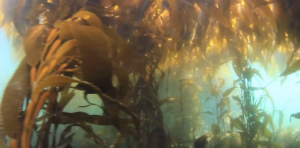 This video provides a good portrait of Macrocystis in a shallow habitat at Sooke BC
This video provides a good portrait of Macrocystis in a shallow habitat at Sooke BC
After the first large storms in October, Macrocystis will end up in tangled masses with Nereocystis on the beaches at Race Rocks and on other beaches on Southern Vancouver Island such as Taylor Beach.
Domain: Eukarya
Kingdom: Plantae
Division: Chromophyta
Class: Phaeophyceae
Order: Laminariales
Family: Lessoniaceae
Genus: Macrocystis
Species: integrifolia (Bory)
Common Name: Giant Kelp
Other Phaeophytes or Brown Algae at Race Rocks
 The Race Rocks taxonomy is a collaborative venture originally started with the Biology and Environmental Systems students of Lester Pearson College UWC. It now also has contributions added by Faculty, Staff, Volunteers and Observers on the remote control webcams. Matthieu Bakhoun, PC yr 28 The Race Rocks taxonomy is a collaborative venture originally started with the Biology and Environmental Systems students of Lester Pearson College UWC. It now also has contributions added by Faculty, Staff, Volunteers and Observers on the remote control webcams. Matthieu Bakhoun, PC yr 28 |

